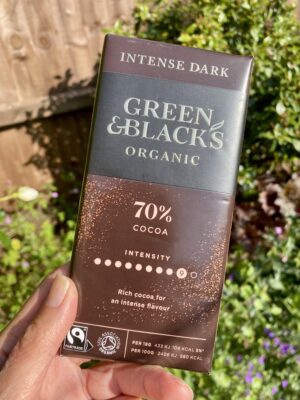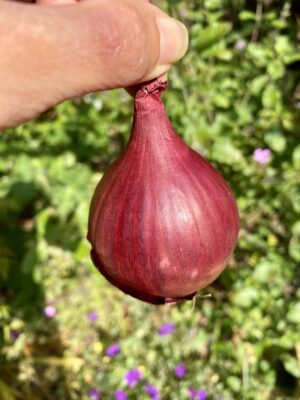A selection of everyday foods and drink items commonly found at home are toxic to dogs and can potentially cause profound health implications if consumed regularly or in any one-off quantities. Maintain your dog’s health by avoiding items that cause harm.
Certain signs can be associated with different forms of toxicity and other illnesses and should not be taken lightly. Ignoring signs of poisoning can trigger health issues from mild to serious to fatal. Therefore, contact your vet no more than two hours after your dog ingests a toxic substance. Your vet must induce vomiting and administer activated charcoal to absorb the toxins, but this procedure is only performed shortly after ingestion. The success of induced vomiting will reduce the risk of toxic danger.
Most veterinarians have access to a register containing treatments for poisons, can administer the correct treatment, and provide the best care for your poor dog. You must alert your veterinarian with information and the time eaten, so your vet can identify the qualifying poison and decide on treatment.
The chance of recovery is possible if a dog owner acts quickly—failure to seek immediate veterinary intervention can cause irreversible health damage for your dog and further veterinary costs, the emotional impact including the death of your pet.
Table of contents:
- Any alcohol
- Dark, milk chocolate or baked goods
- All dairy products
- Grapes and dried fruit
- Xylitol or birch sugar
- Caffeine in all beverages
- Avocado and stone
- Allium family
- Macadamia nuts
List of food and drink toxic for dogs:
1 – Alcohol
Never give your dog alcohol, even as a fun party trick for a social media reel. Beer, spirits, wine and any beverage with an alcoholic content poses a risk of toxicity leading to alcohol poisoning even if ingested in small doses.
Content risk:
Alcohol with the ingredient known as ethanol is a poison.
Risks and consequences of dogs consuming toxic foods:
Canines are sensitive to the effects of alcohol compared to humans. Depending on the dog’s size, the substance will affect a dog’s nervous system and metabolism.
Signs and symptoms of alcohol poisoning in dogs:
- Disorientation
- Lack of coordination
- Lethargy
- Breathing difficulties
- Vomiting
- Diarrhoea
Severe signs if untreated:
- Coma
- Seizures
- Death
2 – Milk or dark chocolate and baked goods

The festive season is a particularly worrying month because chocolate is more likely to be in the home, hanging from a Christmas tree, a box of yummy chocolatey biscuits on the kitchen sideboard, or the kid’s Christmas selection box discarded beneath the seasonal wrapping paper.
Avoid chocolate tree decorations because they are a temptation for your dog, and instead, opt for safer decorations. Always store foods safely with chocolate content.
Chocolate is poisonous to cats, rabbits and rodents too.
Content risk:
Theobromine is present in all chocolate but contains a higher level in dark and unsweetened baking chocolate. If a dog consumes milk chocolate, whilst the item is still toxic and depends on the dosage, it is less toxic than dark and unsweetened baking chocolate. Some chocolate, including drinking chocolate, may contain caffeine, which is poisonous to dogs too.
Possible outcome for your dog:
One particular outcome is kidney damage. Dogs consuming chocolate is the highest enquiry vets make to the Veterinary Poisons Information Service.
Signs and symptoms of theobromine poisoning in dogs:
- Diarrhoea
- Vomiting
- Dehydration from the above and because the ingredient is a diuretic
- Pyrexia (increase in the body’s temperature)
- Hyperactivity (erratic activity at high levels)
Severe and extreme signs if untreated:
- Hypertension (high blood pressure – a dog’s blood pressure must be below 150mmHg to be considered normal)
- Severe tachycardia (issues with the heart’s rhythm)
- Tremors
- Convulsions
- Muscles are rigid
3 – Dairy products
Many people have spoilt their dogs and treated them to refreshing ice cream during the hot weather. And Instagram is full of reels showing a dog happily gobbling down cool, creamy ice cream.
Some dogs can indeed consume dairy without facing the consequences but it can cause toxicity in the body in others. Mild or severe symptoms can appear with some dogs not tolerating dairy because of lacking the enzyme called lactase.
Lactose is a form of sugar found in animal milk, so if spoiling your canine with ice cream this summer, ensure the product is K9-friendly.

Content risk:
Humans produce the enzyme lactase and therefore, can digest lactose. However, dogs do not have sufficient amounts of this enzyme preventing canines from digesting lactose.
Possible outcome for your dog:
When a dog consumes dairy, any undigested lactose reaches the large intestine, where bacteria ferments it, leading to lactose intolerance symptoms.
Signs and symptoms of lactose poisoning in dogs are:
- Digestion system resulting in loose stools, diarrhoea, increased frequency of bowel movements
- Abdominal discomforting causing restlessness, changes in posture because of pain in the abdominal area or general discomfort
- Flatulence results from the inability to digest lactose correctly. Your dog may exhibit bloating and excessive gas
- Vomiting is an occurrence in some dogs after consuming dairy products
- Decrease in appetite or without because of dairy poisoning and leading from symptoms mentioned previously
4 – Grapes and dried fruit (raisins, sultanas & currants)
Particularly at Christmas, mince pies, Christmas cake or pudding are abundant but each product contains dried fruit. Raisin seems to be the most dangerous. Whilst a single piece of dried fruit, fresh grape or cooked may not cause damage, small to higher qualities will. However, if you think your dog has reacted because of eating a single grape or dried fruit poisoning, please contact your vet urgently.
Content risk:
Despite veterinary knowledge, how grapes and dried fruit poison dogs are still unknown, and the same applies to the toxic dosage. Whilst some dogs remain unharmed, others can face severe irreversible health issues. A possibility of the cause is a toxic mould or fungus called Mycotoxin or a metabolic disturbance or idiosyncratic (an adverse reaction through unknown causes).
Possible outcome for your dog:
Should signs re-occur, contact your vet. Your dog may be placed on IV fluids and have a series of urgent blood tests to assess kidney damage. Kidney damage will never reveal itself immediately but becomes apparent after a few days.
If untreated, one to three days can result in kidney failure. In extreme circumstances, dogs have either died or were euthanised.
Signs and symptoms of lactose poisoning in dogs are:
- Vomiting
- Diarrhoea
- **Dehydration
- Blood in faeces
- **Abdominal pain
- Loss of appetite
- Excessive thirst
- Excessive urination
- **Lack of urination
- **Lethargy
- Fluid retention
- Tremors
- Breathing problems
- Bad breath
- Depression
** indicates signs of kidney failure too
5 -Xylitol (also known as Birch Sugar)
Xylitol is primarily used as a sugar substitute in sugar-free gum, various baked goods and some sweets. From experience, I have witnessed someone giving dogs human sweets but cannot confirm if the product contains xylitol – obviously, this person wasn’t aware of the poison. Dogs are safer with treats designed for them.
Because xylitol is a sugar alcohol, it can be found naturally in plants, vegetables and fruit.
Content risk:
Xylitol is extremely toxic to dogs. It doesn’t matter if a single sweet – it is high-level poison.
Possible outcome for your dog:
Xylitol toxicity can cause excessive insulin and cause Hypoglycaemia (low blood sugar) to drop to dangerous levels or a sudden drop in blood sugar.
The substance can cause liver damage as well as low blood sugar.
Signs and symptoms of Xylitol poisoning in dogs:
- Lethargy
- Lack of coordination
- Lack of appetite
- Vomiting
- Collapse
- Seizures
- Coma
- Jaundice (liver damage and shown as yellowing of the eyes)
- Death
6 – Caffeine
Caffeine is found in tea, coffee, fizzy drinks, energy drinks, tea, diet pills, tablets (Proplus), and even chocolate.
Content risk:
Caffeine itself is the culprit.
Possible outcome for your dog:
The substance can attack the nervous system.
Signs and symptoms of caffeine poisoning in dogs:
- Restlessness
- Tremors
- Fast breathing
- Seizures
7 – Avocado
Professionals do not know the exact dosage that makes this fruit toxic. Avocado is harmful to dogs.
Content risk:
Avocados contain Persin which is within every part of the fruit. Avocados have a high fat content, which is a health concern too.
Possible outcome for your dog:
Persin can cause digestion and breathing difficulties if consumed in large amounts, and the fat can cause tummy upset and pancreatitis if too much is eaten.
The avocado stone is large so if your dog grabs it, the size can cause choking.
Signs and symptoms of avocado poisoning in dogs:
- Vomiting
- Diarrhoea
- Heart attack
Related articles:
- Write for me
- Best animal-free cosmetic & personal care
- 6 Animal-derived ingredients used in hair, skin & makeup products
8 – Onions, garlic, leek and chives

These foods are part of the allium family; the ingredients are in sauces, powder, raw foods, processed food, and baby food.
Content risk:
Allium contains toxins called Thiosulfinates and disulphide.
Possible outcome for your dog:
Between one to five days, onion and garlic toxicity can cause anaemia (low red blood cell count) and lead to problems with breathing and lack of energy. A dog will need urine and blood tests but the possibility of recovery is promising if treated early.
Signs and symptoms of allium poisoning in dogs:
Signs starting 24 hours to several days –
- Vomiting
- Diarrhoea
- Reduced appetite
- Abdominal pain
- Dehydration
9 – Macadamia nuts
Surprisingly there isn’t any treatment for macadamia nut poisoning and it takes but a few nuts for toxicity. That’s not forgetting it can be an ingredient in baked foods and we all love giving our pets a treat.
Similar to grapes and dried fruit, the exact toxicity is unknown.
Content risk:
The high-fat content is the danger in macadamia nuts. It can cause pancreatitis or inflammation of the pancreas and the risk factor is higher in different breeds (Yorkshire Terrier and other terrier breeds, Dachshund, miniature Schuazer, King Charles Cavalier, Cocker Spaniel, Miniature Poodle).
Severely overweight dogs and those breeds with or who have had pancreatitis are at risk, so keep those macadamia nuts away!
Possible outcome for your dog:
As with any poison, immediate veterinary intervention is vital for a dog to recover. Dogs with little signs of macadamia nut toxicity can fully recover within two days, resulting in minimal pancreatitis issues. The good news is hospitalisation is not required and can be treated during a consultation in a veterinary practice (may vary between vets).
A dog with severe pancreatitis may recover but has a risk of chronic pancreatitis disease, bile duct obstruction or diabetes mellitus. Initial treatment for pancreatitis diagnosis includes IV fluid, muscle relaxants, anti-nausea medications and pain relief.
Signs and symptoms of macadamia nut poisoning in dogs:
Stage 1 between three to six hours –
- Vomiting
- Increased temperature
- Lethargy
Stage 2 between six and twelve hours –
- Unsteady on its paws
- Stiffness in the joints
- Choosing not to use rear limbs
- Tremors
- Increased temperature
Key takeaways:
- Whatever toxic food your dog has consumed, to minimise health risk or fatality, immediate veterinary assessment is crucial
- Signs and symptoms can be similar to other toxic ingredients and illnesses.
- Never make your dog vomit. A veterinary professional must perform this.
- A vet will only induce vomiting on undigested foods – beyond that, other treatments will be recommended.
Related questions:
Can I use a video vet initially?
I recommend contacting your normal vet and asking for an emergency appointment. A video vet is normally an online booking facility, and your dog must see a vet urgently.
I am worried about the cost of a vet.
Claiming under your pet insurance is one option but check out the excess.
Getting your dog checked early may reduce the overall cost but delaying a veterinary consultation and recommended treatment can lead to further consultations, specialised food, lifelong medication or supplements.
Is there an organisation I can call about a particular poison?
Pet owners can call the Animal Poison Line, which is open 24/7. I urge you to do this urgently as time is a factor when a pet has eaten toxic food. Ensure you have all relevant information to hand.
- Food eaten
- Symptoms
- Times the food consumed
I do not know if advice is chargeable.
Telephone: 01202 509000
Can a dog survive food poisoning or cause death in dogs?
To survive or to limit internal damage, your dog must be treated by a vet within two hours at least of consuming toxic drinks or food. Food or drink must be undigested for a vet to flush the poison out of a dog’s system.
Untreated dogs are more at risk. Grapes or dried fruit in particular can cause death, so you must get your dog checked by a vet quickly.
Never attempt to treat a poisoned dog at home.
Consider pet insurance. Fluffy gives a clear breakdown of their policies without technical and legal jargon.
Disclaimer:
I am not a veterinary professional and recommend you seek urgent medical advice from a qualified veterinarian if you think your dog has been poisoned.
Poppys Pets is a participant in Awin and Amazon Associate affiliate programs which compensates me for referring traffic. It is of no extra cost to you and if thinking of buying a product, please consider using my link. It\'ll earn Poppy\'s Pets a few pennies to continue to this website. Only a selection of articles and videos on this website and YouTube channel contains affiliate links. Further information: Disclaimer and Privacy Policy
Poppy’s Pets has a pet niche column in an East Yorkshire newspaper.


